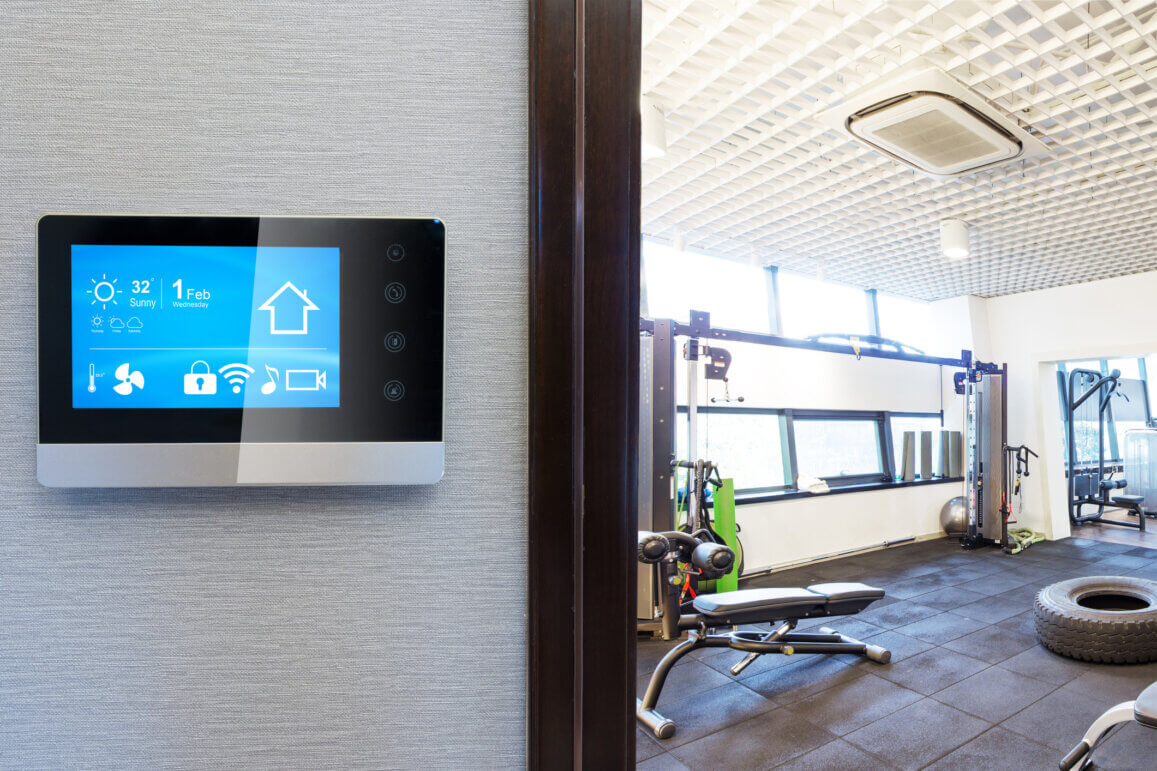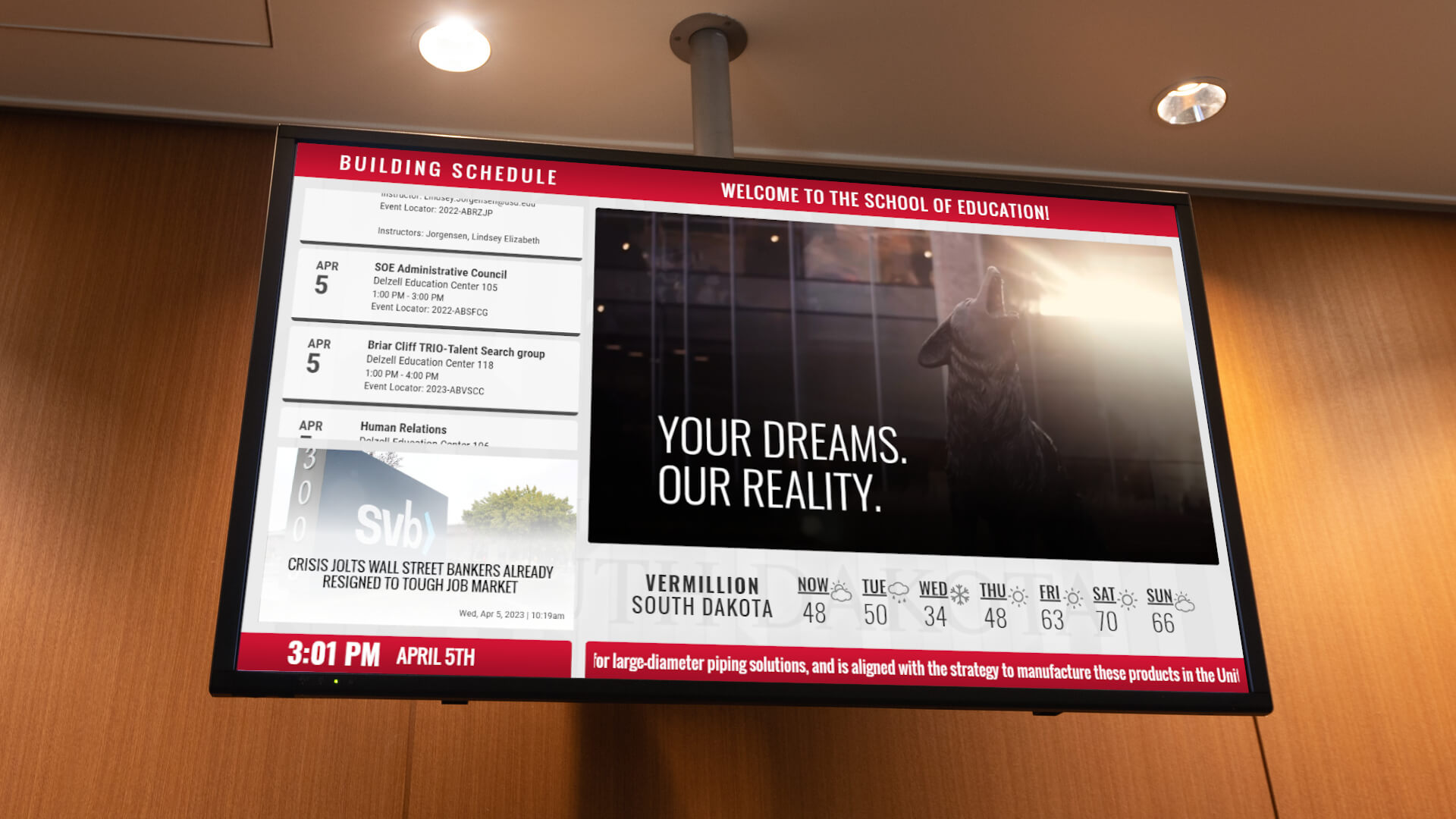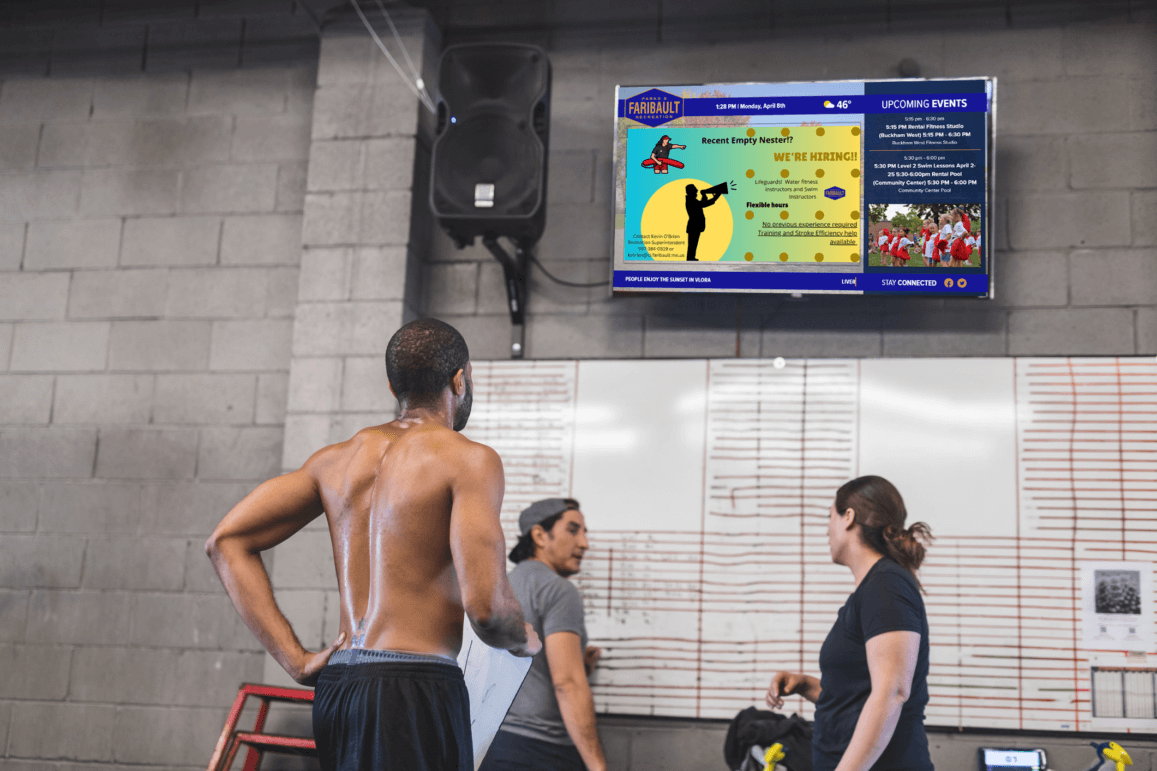A Guide to Digital Signage & How It’s Being Used
What is Digital Signage?
Digital displays are becoming an increasingly popular method of digital communication for businesses. Powerful integrations and apps allow digital signage to exhibit a wide variety of content and even utilize tools such as social media and other web-based software. However, some organizations fail to use their signage to its fullest potential. Unlike a billboard, digital signage requires a bit more management, but the returns on investment can also be much larger. Understanding exactly what digital signage is will give you a better idea of how to leverage its strengths. Looking to try it out yourself? Click here to sign up!
Digital signage encompasses all the content, hardware, and software working in tandem to communicate with your audience. If one of these breaks or isn’t compatible with one another, your whole signage strategy can be hindered. This extends even to outside software that is set up through integrations.
Many software providers operate on “cloud-based management software.” This means that all your progress, settings, and assets are stored online and saved in the cloud. If your hardware breaks or the software goes down for a day, you do not have to worry about losing any of your announcements. Lastly, working through the cloud allows you to easily access and share assets, schedules, users, and more instantaneously between locations. These features position digital signage in a more advantageous state over traditional media when looking toward future trends.

Choosing Your Display
One of the first things you will do if you decide to implement digital signage is look for a display. For standard displays, LED, LCD, and OLED screens are probably going to be your most popular options. From there, you just need to consider what you want out of your TV. You do not always need the biggest and best screen you find, rather, you need a screen that falls within your budget and plays to your strengths. Once you have a screen selected, you then need to think of external factors that will affect the performance of the display. Where should the screen be placed? What type of content will be shown here? Who will be seeing this? These are all great questions to consider when choosing and placing your sign.

Different Types of Displays and Their Uses
However, depending on your digital signage strategy, you may need a different type of display altogether. For instance, interactive signage is more commonly found in lobby areas to assist with wayfinding. Buying a digital signage tv is a big investment, so having a solid plan in place to use it effectively is crucial. With that in mind, it is important to consider the different types of signage as well.
Advertising Displays
This is likely the most common form of digital signage you will see out in the wild. These displays will typically include a playlist of rotating announcements that will take up most of the layout space. From there, supplementary information like time and date, weather, calendars, or social media can be included as well. The point of this signage is to relay information to an audience, so be sure to not clutter your layouts with too many apps.
Interactive Displays
Interactive displays engage your audience in ways traditional advertising cannot. Encouraging viewers to scan QR codes, utilize interactive wayfinding tools, or even play games are all ways digital signage can give your audience control over their experience. Additionally, viewers will feel more connected to a brand that they can directly interact with!
Internal Displays
Digital signage can do wonders to bolster your internal communication efforts. Whether displaying announcements in high-traffic areas or showing KPI information on a production/sales floor, internal digital signage provides a degree of utility for your staff. Furthermore, keeping everyone on the same page and delivering useful information will streamline your workflow.
Menu Boards
More and more restaurants are implementing digital signage to improve their dining experiences. Menu boards can display a rotating list of menu items that automatically updates throughout the day. In addition, promotional items and limited-time offers can be displayed alongside typical menu items, with exciting graphics or videos that can tantalize tastebuds. Even more exciting use cases are beginning to appear, such as interactive kiosks customers can order directly from to cut down on wait times.
Where Should You Place Your Screens?
Typically, you want your screens in high-traffic areas that your targeted audience frequents. However, you also need to consider the actual viewing distance from your viewers. Eye experts recommend 8 to 10 feet away from the screen is the ideal viewing distance. By the same token, they also recommend positioning your screens at eye level if slightly lower. Constantly forcing your audience to look up can cause eye strain and fatigue. While the best viewing distances can be relatively subjective, this can serve as a solid basis for a digital signage placement guide.
The Advantages of Digital Signage
Digital signage offers a host of advantages over other forms of advertising. Digital signage can be updated in real-time, meaning last-minute changes and updates can be delivered to your audience in a flash. Grouping tools and stream schedules also allow you to get ahead of future trends by planning signage in advance. But most importantly, digital signage has a greater retention rate among viewers than other media. Aside from just being eye-catching, digital signage is proving to have a greater impact on audiences.
Do not delay to start your digital signage journey! REACH is here to provide unlimited support and useful information to get the most out of your displays. Click the button below to request a free demo.



